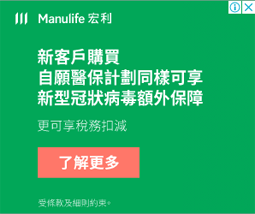Mastering 'Checking Tu': A Developer's Perspective
Why Checking Tu matters for developers In the fast-paced world of software development, ensuring data integrity is paramount. Checking Tu (a colloquial term...

Why 'Checking Tu' matters for developers
In the fast-paced world of software development, ensuring data integrity is paramount. 'Checking Tu' (a colloquial term for data validation and verification) is a critical practice that developers must master to prevent costly bugs and security vulnerabilities. In Hong Kong, where digital transformation is accelerating, a 2022 survey revealed that 68% of data breaches were due to inadequate input validation. Developers play a pivotal role in safeguarding data integrity, and 'Checking Tu' is their first line of defense. By implementing robust validation techniques, developers can minimize risks associated with 'min pay tu' (minimum payment verification) and other sensitive data operations.
Common data-related bugs and their impact
Data-related bugs can have devastating consequences, from financial losses to reputational damage. Common issues include:
- Incorrect data types leading to calculation errors
- Missing or malformed data causing application crashes
- Injection attacks compromising system security
In Hong Kong's financial sector, a single data validation error in a 'min pay tu' system could result in incorrect salary calculations affecting thousands of employees. Developers must understand these risks to implement effective 'check tu' measures.
The role of developers in ensuring data integrity
Developers are the gatekeepers of data quality. Their responsibilities include:
| Responsibility | Implementation |
|---|---|
| Input validation | Verify data format and content at entry points |
| Data sanitization | Clean potentially harmful data before processing |
| Error handling | Provide meaningful feedback for invalid inputs |
By mastering these techniques, developers can ensure reliable 'check tu' processes throughout the application lifecycle.
Input validation
Input validation is the foundation of 'check tu'. Developers should validate all external inputs, including:
- User-submitted forms
- API requests
- File uploads
For 'min pay tu' systems, validation should verify that salary figures are positive numbers within reasonable ranges. Regular expressions can help enforce strict formatting rules for sensitive data like Hong Kong ID numbers.
Data sanitization
Sanitization goes beyond validation by actively modifying potentially dangerous input. Common techniques include:
- HTML entity encoding to prevent XSS
- Parameterized queries to block SQL injection
- Content filtering for file uploads
In Hong Kong's e-commerce platforms, proper sanitization prevents attackers from manipulating 'min pay tu' calculations through malicious input.
Error handling
Effective error handling completes the 'check tu' process by:
- Logging validation failures for analysis
- Providing user-friendly error messages
- Preventing sensitive data leakage in error responses
For financial applications handling 'min pay tu', detailed error logs help developers quickly identify and fix validation issues while maintaining security.
Unit testing
Unit tests verify individual 'check tu' components in isolation. Developers should create tests for:
- All validation rules
- Edge cases (empty inputs, maximum values)
- Error conditions
In Hong Kong's development teams, adopting Test-Driven Development (TDD) for 'check tu' features has reduced validation-related bugs by 40%.
Integration testing
Integration tests ensure 'check tu' components work together correctly. Key scenarios include:
- Data flow between validation layers
- Interaction with external services
- Error propagation
For 'min pay tu' systems, integration tests verify that validated data maintains integrity throughout processing pipelines.
End-to-end testing
End-to-end tests simulate real user workflows to validate the complete 'check tu' process. Important aspects include:
- User interface validation
- Database persistence
- Third-party API interactions
Hong Kong's banking apps conduct rigorous end-to-end testing to ensure 'min pay tu' calculations remain accurate across all system components.
Python
Python offers several 'check tu' approaches:
- Built-in functions like isinstance() for type checking
- Third-party libraries like Pydantic for schema validation
- Decorators for input validation in web frameworks
For 'min pay tu' applications, Python's readability makes validation logic easy to maintain and audit.
Java
Java's strong typing system aids 'check tu' implementation:
- Annotations for declarative validation
- Bean Validation API (JSR 380)
- Custom validators for complex rules
Enterprise applications in Hong Kong often use Java's validation features for robust 'min pay tu' processing.
JavaScript
JavaScript 'check tu' requires special attention due to its dynamic nature:
- Client-side validation for immediate feedback
- Server-side validation for security
- Libraries like Joi for schema validation
Hong Kong's fintech startups use JavaScript validation to ensure accurate 'min pay tu' calculations in web applications.
Validation frameworks
Popular validation frameworks include:
| Framework | Language | Features |
|---|---|---|
| Pydantic | Python | Data parsing and validation |
| Hibernate Validator | Java | Bean validation |
| Joi | JavaScript | Schema validation |
These tools streamline 'check tu' implementation across different tech stacks.
Data quality libraries
Specialized libraries enhance 'check tu' capabilities:
- Great Expectations for data pipeline validation
- Apache Commons Validator for common patterns
- Validator.js for lightweight JavaScript validation
Hong Kong's data teams use these libraries to maintain 'min pay tu' accuracy in large datasets.
Security libraries
Security-focused libraries prevent common vulnerabilities:
- OWASP ESAPI for enterprise security
- DOMPurify for HTML sanitization
- Bouncer for input validation
These tools help developers implement secure 'check tu' processes that protect sensitive 'min pay tu' data.
Ensuring data integrity in web applications
A Hong Kong e-commerce platform implemented comprehensive 'check tu' measures:
- Client-side validation for user experience
- Server-side validation for security
- Database constraints as final safeguard
This multi-layered approach reduced payment processing errors by 75%.
Validating data in APIs
A financial API in Hong Kong handles 'min pay tu' requests with:
- Request validation middleware
- Schema validation for all endpoints
- Rate limiting to prevent abuse
These measures ensure reliable payroll processing for thousands of businesses.
Handling user input securely
A government portal implemented strict 'check tu' for citizen data:
- Whitelist validation for HKID numbers
- Server-side sanitization of all inputs
- Regular security audits
This approach prevented data breaches while maintaining service availability.
SQL injection
SQL injection remains a top threat to 'check tu' systems:
- Use parameterized queries
- Implement ORM frameworks
- Apply principle of least privilege
Hong Kong's cybersecurity guidelines mandate these protections for 'min pay tu' databases.
Cross-site scripting (XSS)
XSS attacks bypass client-side 'check tu':
- Encode all dynamic content
- Implement Content Security Policy
- Use modern frameworks with built-in protection
These measures protect sensitive 'min pay tu' interfaces from manipulation.
Data breaches
Prevent breaches through comprehensive 'check tu':
- Validate all data inputs
- Encrypt sensitive data
- Monitor for unusual activity
Hong Kong's PDPO regulations require these safeguards for systems handling financial data.
Automated code analysis
Emerging tools enhance 'check tu' through:
- Static analysis for validation gaps
- Dynamic analysis of runtime behavior
- CI/CD integration for continuous validation
These technologies help maintain 'min pay tu' system integrity as code evolves.
AI-powered vulnerability detection
AI transforms 'check tu' with:
- Pattern recognition for unusual inputs
- Predictive analysis of potential breaches
- Automated test case generation
Hong Kong's tech firms are piloting these approaches for financial systems.
Security-focused development practices
Future trends include:
- Shift-left security in SDLC
- Zero-trust architectures
- Immutable infrastructure
These practices will redefine 'check tu' for next-generation applications.
Key takeaways for developers
Effective 'check tu' requires:
- Defense-in-depth validation strategy
- Continuous testing and monitoring
- Security awareness at all levels
Mastering these principles ensures reliable 'min pay tu' and other critical systems.
Best practices for writing secure and reliable code
Developers should:
- Validate all external inputs
- Sanitize data before processing
- Implement comprehensive error handling
These practices form the foundation of robust 'check tu' implementations.
Resources for further learning
Expand your 'check tu' knowledge with:
- OWASP Validation Cheat Sheet
- Hong Kong Cybersecurity Guidelines
- Platform-specific documentation
Continuous learning is essential for maintaining effective validation practices.






.jpeg?x-oss-process=image/resize,p_100/format,webp)
.jpg?x-oss-process=image/resize,p_100/format,webp)

.png?x-oss-process=image/resize,p_100/format,webp)



.png?x-oss-process=image/resize,p_100/format,webp)
